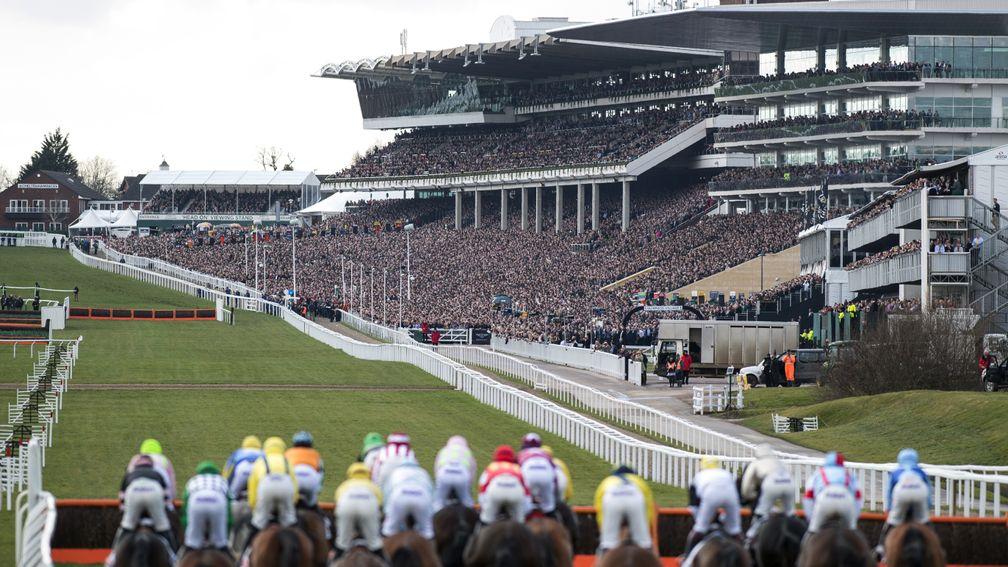BHA unveils 17 recommendations from welfare review of Cheltenham Festival

Pre-race veterinary checks on every runner at the Cheltenham Festival will be worth it "if it saves a single horse from injury", the BHA said on Wednesday as it revealed the findings of its review into the fatalities at this year's meeting.
The report contained 17 recommendations for all Cheltenham fixtures and across jump racing as a whole following an investigation into the death of six horses at the festival in March.
Among them is the lowering of the safety factor to 20 (from 24) in two-mile chases, with the Grand Annual – in which three horses suffered fatal injuries last season – the race most likely to be affected by the change.
The race conditions of the Martin Pipe will be altered to remove weight-claiming allowances for riders in an attempt to encourage connections to secure the services of the most experienced conditional jockeys.
At this year's festival 103 runners were the subject of veterinary checks but this is to be extended to all competitors at the meeting. Horses deemed unsuitable to race can be withdrawn under such circumstances.

BHA chief regulatory officer Brant Dunshea said: "This is an important recommendation and this is all about using our experts on the day, our trained veterinary officers, to identify risk.
"Every single runner who competes at the festival will now be given a full check by a veterinary officer before they race. Where there are concerns those vets will have the ability to say no, this horse can't run."
Dunshea said he appreciated that could cause disappointment for connections but added: "We believe that if it saves a single horse from injury then it will have been worth taking that measure."
The six fatalities during the 2018 Cheltenham Festival*
North Hill Harvey (fell, Grand Annual)
Some Plan (fell, Grand Annual)
Dresden (fell, Grand Annual)
Sandsend (broke down on flat, County Hurdle)
Mossback (fell, National Hunt Chase)
Report To Base (fell, novice handicap chase)
*a seventh horse was euthanised shortly after the festival after complications from surgery
According to Dunshea the Grand Annual was the race that caused the most concern with three horses being fatally injured "almost unheard of".
He added: "It was clear that this race was going to be an important part of our review. Indeed, the review then backed this up and the Grand Annual was highlighted as a race which carries increased risk."
Dunshea said they believed reducing the field would lower the number of expected fallers from 2.8 per year to around 1.8.
There had been speculation the Grand Annual's position as the last race of the meeting could have been a contributory factor, but Dunshea said research suggested "the position of the race has little impact on the faller rate".

Changes to the allowance structure in the Martin Pipe Conditional Jockeys' Handicap Hurdle following the 2014 race had made the contest safer, Dunshea said.
"However it does remain amongst the races with increased risk," he added.
Dunshea also emphasised the importance of another one of the recommendations. The industry was told it must support a major research project to develop a predictive model for identifying risk factors for all jump racing.
The project, requiring "appropriate funding and detailed consultation", will include factors such as horse history and performance, jockey and trainer elements, and is due to begin early next year.
Dunshea said: "It reflects two main areas of thinking. The first is, as discussed in the findings, we are of a view that non-racecourse or raceday factors are likely to be as big a contributor to risk at the festival as raceday factors.
"As such we hope in the long term this work will contribute to making the festival itself safer.
"The second element is, perhaps even more significantly, the sport's welfare record does not begin and end with the Cheltenham Festival.
"We see this review as marking a jumping off point to a far more significant and detailed project which will help us better identify and act on risk across the entire sport."
The BHA is also set to undertake analysis of faller rates by trainer and jockey for Cheltenham and all jump racing, with individual trainers and jockeys with "significantly higher" faller rates than average being required to "engage constructively" with the BHA.
Dunshea said: "When data identifies that certain individuals may carry greater risk it would be remiss of us as a regulator not to work with those individuals to identify those causes."
Members can read the latest exclusive interviews, news analysis and comment available from 6pm daily on racingpost.com
Published on inBritain
Last updated
- New King George VI Chase favourite with some bookmakers after big market move on Tuesday
- Tony Carroll has passed the £1 million prize-money mark for the first time - here we assess his eight runners on Wednesday
- Frost-free Ludlow's Wednesday card goes ahead; Thursday's jumps meetings at Ffos Las and Exeter under threat due to rain
- 'I would be first in the queue' - Paul Nicholls throws his support behind Nicky Henderson's campaign to save Kempton
- Kempton agreement with developer made 'in the best interests of racing' says former Jockey Club Racecourses chief
- New King George VI Chase favourite with some bookmakers after big market move on Tuesday
- Tony Carroll has passed the £1 million prize-money mark for the first time - here we assess his eight runners on Wednesday
- Frost-free Ludlow's Wednesday card goes ahead; Thursday's jumps meetings at Ffos Las and Exeter under threat due to rain
- 'I would be first in the queue' - Paul Nicholls throws his support behind Nicky Henderson's campaign to save Kempton
- Kempton agreement with developer made 'in the best interests of racing' says former Jockey Club Racecourses chief